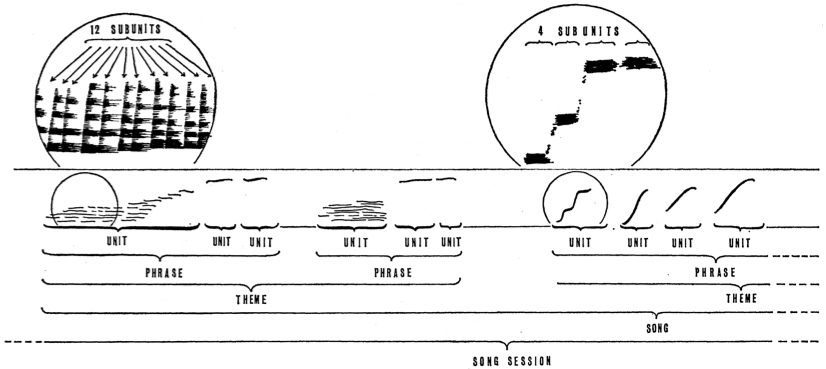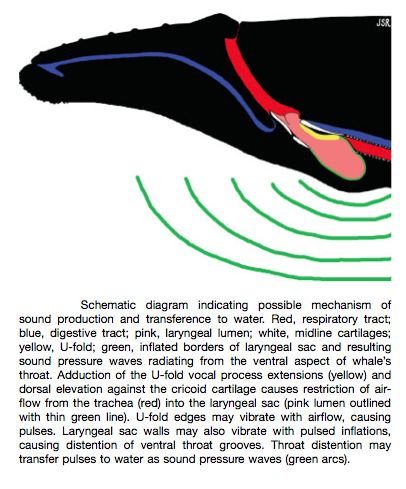Whalesong
Biology 342 Fall 2010 // By Jack Craig & Matt Yee
Mechanism
Whale calls consist of patterns of songs, repeated in a manner similar to birds. However, while bird songs last only a matter of seconds, humpback whale calls can vary from seven to over 30 minutes of continuous vocalization. Also unlike birds, studying gender differences between calls is difficult in whales, as males and females frequently overlap in size and call.
Researchers organize whale songs by dividing them into smaller parts. The shortest continuous sound audible to humans is called a unit or note. If notes are sped up and further subdividable, then these sound bits are called subunits. A series of whole units are called a phrase, while a series of unbroken phrasesis called a theme. Songs are defined as having several distinct themes, while song sessions are a series of songs with no pause greater than one minute.
Note frequency varies as in other animals. All humpback songs contain lines of rapidly repeating pulses, often alternating with sustained notes. The songs also contain many short, high frequency notes, most of which abruptly rise in frequency. The opposite, units that fall in frequency, are also played in long, sustained notes of repetitive rhythm and tone. (Payne and McVay, 1971)
Below, a diagram of this scheme for organizing whalesong.

Image Source: "Songs of Humpback Whales"
To produce these unique communications, the larynxes of baleen whales contain vocal folds for noise production; Mysticite (baleen whale) larynxes carry a U-shaped fold (appropriately named "U-fold") in their lumen. The vocal cords lay parallel to airflow, as opposed to perpendicular placement in terrestrial animals. These folds are supported by arytenoid cartilage which themselves can vibrate and produce sounds. The folds themselves are controlled by extensive skeletal muscle which may also assist in the movement of air between organs. A laryngeal sac capable of expansion and contraction may serve as a resonance space for both the U-folds and the arytenoid cartilage. (Reidenberg and Laitman, 2007)
Below: the A diagram of the apparatus in context, and a close-up of the U-fold at right.


Source for Images: " Discovery of a Low Frequency Sound Source"
